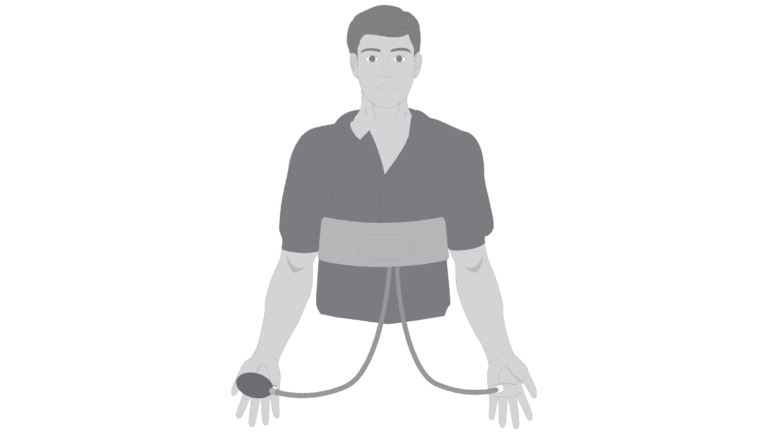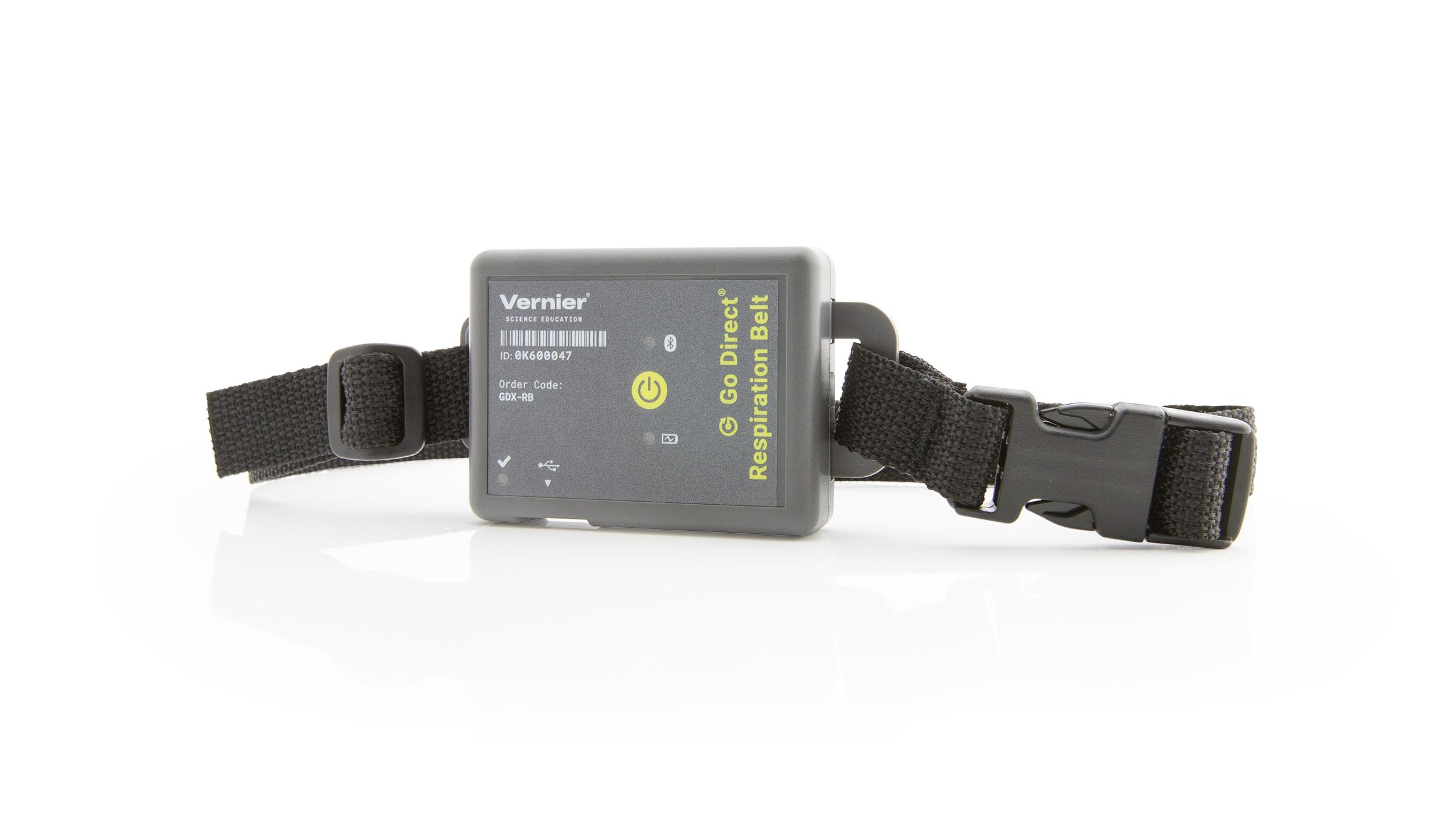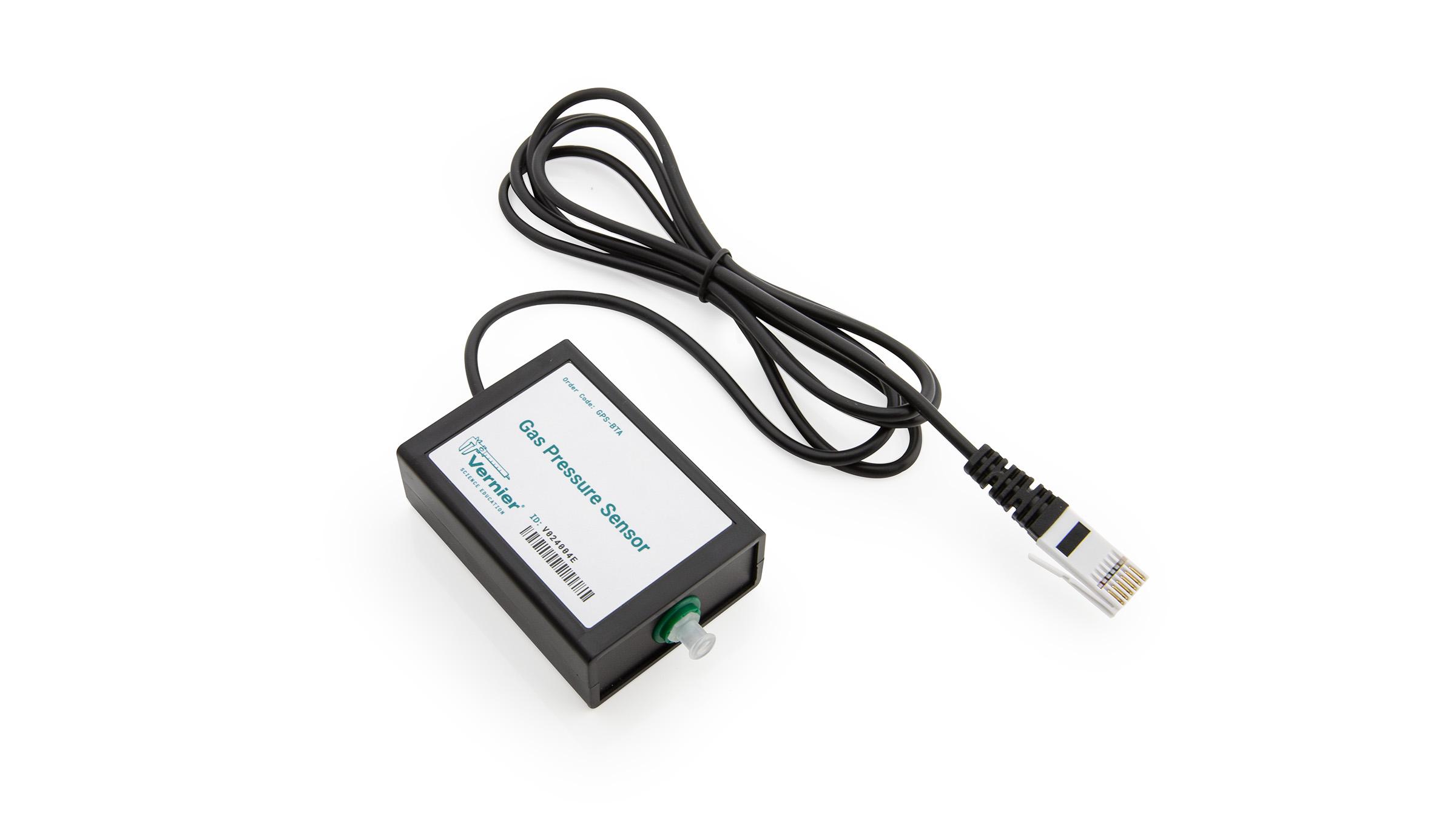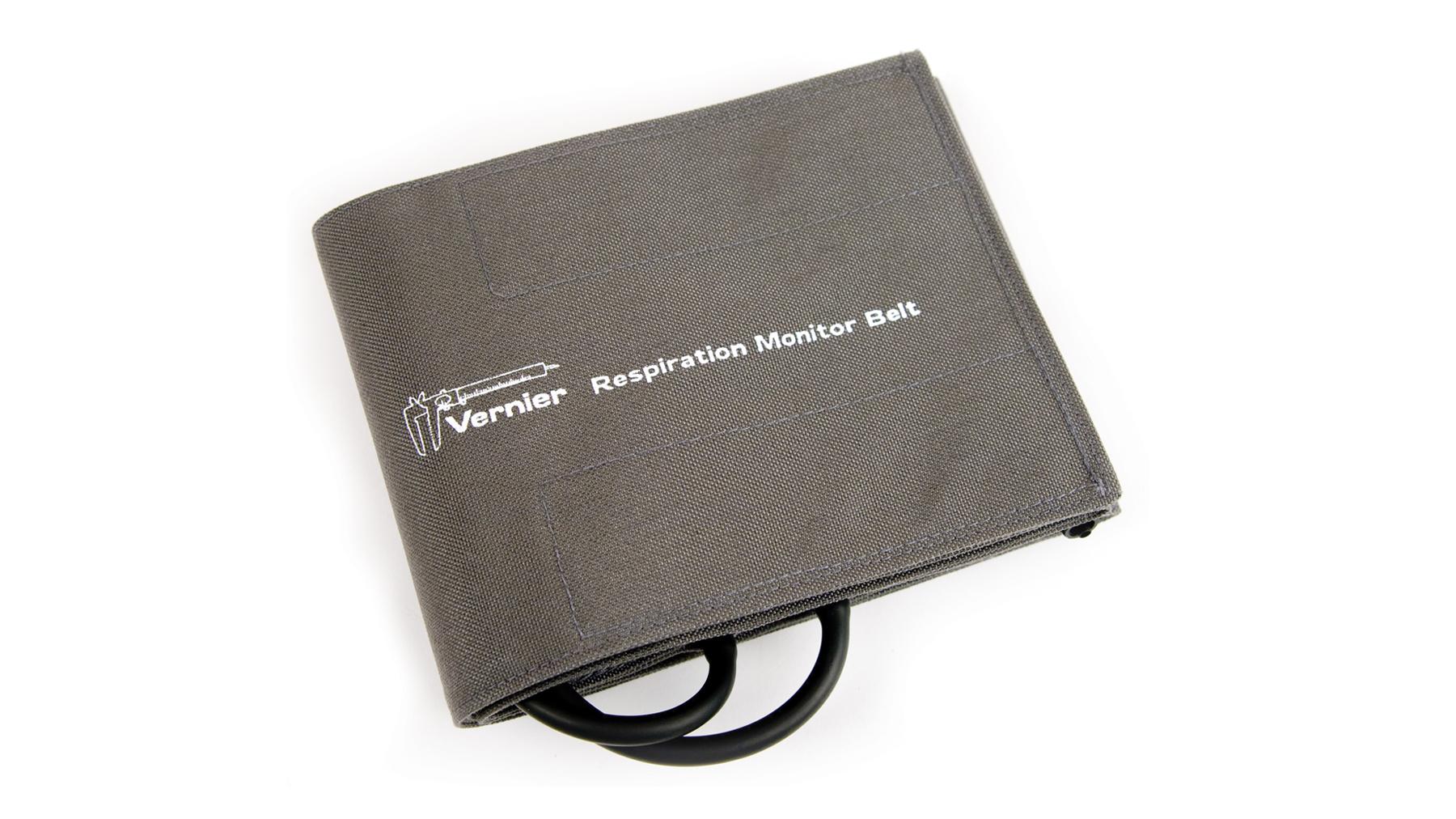
Introduction
Your respiratory system allows you to obtain oxygen, eliminate carbon dioxide, and regulate the blood’s pH level. The process of taking in air is known as inspiration, while the process of blowing out air is called expiration. A respiratory cycle consists of one inspiration and one expiration. The rate at which your body performs a respiratory cycle is dependent upon the levels of oxygen and carbon dioxide in your blood.
You will monitor the respiratory patterns of one member of your group under different conditions. A respiration belt will be strapped around the test subject and connected to a computer-interfaced Gas Pressure Sensor. Each respiratory cycle will be recorded by the computer, allowing you to calculate a respiratory rate for comparison at different conditions.
Objectives
In this experiment, you will
- Monitor the respiratory rate of an individual.
- Evaluate the effect of holding of breath on the respiratory cycle.
- Evaluate the effect of rebreathing of air on the respiratory cycle.
Sensors and Equipment
This experiment features the following sensors and equipment. Additional equipment may be required.
Option 1

Correlations
Teaching to an educational standard? This experiment supports the standards below.
- International Baccalaureate (IB) 2025/Biology
- B3.3.8—Internal and external intercostal muscles as an example of antagonistic muscle action to facilitate internal body movements
Ready to Experiment?
Ask an Expert
Get answers to your questions about how to teach this experiment with our support team.
- Call toll-free: 888-837-6437
- Chat with Us
- Email support@vernier.com
Purchase the Lab Book
This experiment is #26 of Biology with Vernier. The experiment in the book includes student instructions as well as instructor information for set up, helpful hints, and sample graphs and data.



